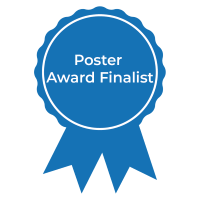Back
Neural Crest, Placodes and Craniofacial Development
Poster: Neural Crest, Placodes and Craniofacial Development
44 - Effects of Incremental Maxillomandibular Advancement Surgery on Airway Resistance and Facial Topography
Monday, March 25, 2024
10:15am – 12:15pm US EDT
Location: Sheraton Hall
Poster Board Number: 44
There are separate poster presentation times for odd and even posters.
Odd poster #s – first hour
Even poster #s – second hour
Co-authors:
There are separate poster presentation times for odd and even posters.
Odd poster #s – first hour
Even poster #s – second hour
Co-authors:
Michael Shimizu, BSc, DMD, MD, MSc, FRCDC - Chair, Oral and Maxillofacial Surgery, Schulich School of Medicine and Dentistry; Ali Tassi, DDS, MCID - Assistant Dean, Postgraduate Dental Education, Schulich School of Medicine & Dentistry; Louis Ferreira, PhD, PEng - Associate Professor, Mechanical & Materials Engineering, Schulich School of Medicine & Dentistry; Jeff McQuade, RT - Breathing Solutions Inc.; Timothy Wilson, PhD - Associate Professor, Anatomy & Cell Biology, Schulich School of Medicine & Dentistry
- JM
Jorge-Alberto Mejia-Lopez, BSc
Graduate Student
Schulich School of Medicine and Dentistry, Western Univeristy
London, Ontario, Canada
Presenting Author(s)
Abstract Body : Background: Obstructive sleep apnea (OSA) is a chronic sleep disorder characterized by recurrent airway collapse during sleep, resulting in waking gasps that diminish sleep quality. Maxillomandibular advancement (MMA) is a highly effective surgical treatment for OSA that moves the maxilla and mandible anteriorly. Although altering a patient’s facial appearance, it tightens soft oropharyngeal tissues, increasing airway volume and reducing collapse. While highly effective for treating OSA, the relationships between magnitude of MMA, airway resistance, and facial change remain unclear. The objectives of this study are to measure airway resistance and facial topographic changes in cadavers undergoing incremental MMA.
Methods: Dentulous fresh-frozen cadavers (4M/4F) underwent MMA surgery. Bone distractors (KLS Martin) were installed permitting precise incremental advancements of the maxillomandibular complex (MMC). The MMC was advanced from overjet aligned baseline to 14mm by 2mm increments. At each advancement, airway resistance and facial topography were measured. Cadavers were ventilated (CareFusion LTV 1000) according to their estimated tidal volume (6mL/kg) at a constant breath rate (1.5s). Breath-by-breath ventilatory pressure and flow parameters enabled calculation of airway resistance. Facial 3D meshes were created (Artec Spider Laser Scanner) and utilized to make 2D lateral profile silhouettes of the cadavers (Slicer), enabling facial topography assessment via facial angle measurements (naso- facial, mental, labial).
Results: MMA from 0-6mm, 6-10mm, and 10-14mm decreased airway resistance by 16.22%, 14.78%, and 8.91%, respectively. Naso- facial and mental angles taken at 0 and 14mm of MMA decreased by 1.81%±10.15 and 25.54%±12.86, respectively. Whereas the nasomental angle increased by 4.11%±3.77.
Conclusion: MMA reduces airway resistance by 2.85% per mm of incremental advancement. Incremental measurements suggest the greatest resistance declines occur prior to 10mm advancement. MMA beyond 10mm produces minimal functional benefit for airway resistance whilst continuing to impact facial appearance of patients, namely in the nasolabial region.
Significance: These data represent some of the first resistance measurements to arise from simulated ventilation in cadavers. Defining the relationships that exist between magnitude of MMA, airway resistance, and facial topography will allow surgeons to perform more predictive interventions, potentially decreasing the facial changes patients experience post-MMA. Moreover, modelling facial topography using 2D and 3D methods provides patients with a means of foreseeing changes in their physical appearance, better aligning personal and clinical expectations.
Methods: Dentulous fresh-frozen cadavers (4M/4F) underwent MMA surgery. Bone distractors (KLS Martin) were installed permitting precise incremental advancements of the maxillomandibular complex (MMC). The MMC was advanced from overjet aligned baseline to 14mm by 2mm increments. At each advancement, airway resistance and facial topography were measured. Cadavers were ventilated (CareFusion LTV 1000) according to their estimated tidal volume (6mL/kg) at a constant breath rate (1.5s). Breath-by-breath ventilatory pressure and flow parameters enabled calculation of airway resistance. Facial 3D meshes were created (Artec Spider Laser Scanner) and utilized to make 2D lateral profile silhouettes of the cadavers (Slicer), enabling facial topography assessment via facial angle measurements (naso- facial, mental, labial).
Results: MMA from 0-6mm, 6-10mm, and 10-14mm decreased airway resistance by 16.22%, 14.78%, and 8.91%, respectively. Naso- facial and mental angles taken at 0 and 14mm of MMA decreased by 1.81%±10.15 and 25.54%±12.86, respectively. Whereas the nasomental angle increased by 4.11%±3.77.
Conclusion: MMA reduces airway resistance by 2.85% per mm of incremental advancement. Incremental measurements suggest the greatest resistance declines occur prior to 10mm advancement. MMA beyond 10mm produces minimal functional benefit for airway resistance whilst continuing to impact facial appearance of patients, namely in the nasolabial region.
Significance: These data represent some of the first resistance measurements to arise from simulated ventilation in cadavers. Defining the relationships that exist between magnitude of MMA, airway resistance, and facial topography will allow surgeons to perform more predictive interventions, potentially decreasing the facial changes patients experience post-MMA. Moreover, modelling facial topography using 2D and 3D methods provides patients with a means of foreseeing changes in their physical appearance, better aligning personal and clinical expectations.


